The future of gaming is here, and it’s all about subscriptions! Create a gaming platform that captivates players and provides a steady stream of income. With a subscription-based model, you can offer gamers exclusive content, special perks, and a vibrant community, while ensuring consistent revenue. This guide will walk you through every step of building your platform, from selecting the right technology and designing an immersive user experience to marketing your service and keeping subscribers engaged. Ready to revolutionize the gaming world? Let’s dive in and start building your gaming empire!
TL;DR
- Craft a compelling game: Uniqueness is key!
- Choose the right tech stack: Consider scalability and security.
- Build a strong community: Engage your players actively.
- Implement a robust subscription model: Offer tiered plans with value.
- Market your platform effectively: Reach your target audience.
- Analyze and iterate: Continuously improve based on player feedback.
- Monetize beyond subscriptions: Explore in-game purchases and sponsorships.
Building Your Online Gaming Kingdom: A Step-by-Step Guide
So you want to build your own online gaming empire? That’s awesome! Creating a successful subscription-based gaming platform requires careful planning, a compelling game, and a smart strategy. This guide will walk you through the process, step by step, helping you build a thriving online gaming community.
Choosing Your Game and Defining Your Niche
Before diving into the technical nitty-gritty, you need a game that’s not just good, but great. Think about what unique experience you can offer players that will make them choose your game over the countless others out there. Will it be a sprawling multiplayer RPG where players forge epic friendships and conquer virtual worlds together? A competitive esports title where skill and strategy reign supreme? Or perhaps a charming, addictive casual mobile game perfect for quick bursts of fun?
To help you nail this crucial first step, consider these key aspects:
- Genre: This isn’t just about choosing “RPG” or “Strategy.” Think deeper. Within RPGs, are you focusing on high fantasy, sci-fi, or something completely original? Within strategy, will it be real-time, turn-based, grand strategy, or something else entirely? The more specific you are, the better you can target your audience. Research popular genres and identify underserved niches. Are there any exciting hybrids you could create?
- Gameplay: What makes your game fun? This goes beyond the genre. What core loop will keep players engaged? Is it the thrill of combat, the satisfaction of problem-solving, the joy of creation, or the social interaction? Consider the pacing – is it fast-paced and action-packed, or slow-burn and strategic? Think about the player experience from start to finish. What feeling do you want players to walk away with?
- Unique Selling Proposition (USP): This is the most crucial element. What makes your game different? What’s the one thing that will make players choose your game over the competition? It could be anything from a unique art style (think the vibrant, hand-drawn aesthetic of Cuphead) to innovative gameplay mechanics (like the roguelike elements in Hades) or a compelling narrative that keeps players invested (like the story in The Witcher 3). Don’t just create another clone; create something memorable, something that players will talk about. A strong USP is the foundation of your marketing efforts.
Market Research is Your Secret Weapon
Before you invest countless hours and resources into development, it’s vital to conduct thorough market research. This isn’t just about looking at your direct competitors; it’s about understanding the broader gaming landscape.
- Analyze Existing Platforms: Don’t just look at games; examine successful subscription-based gaming platforms. What are their pricing models? How do they engage their communities? What features do players love (and hate)? What are their retention rates? What are their marketing strategies? Use this information to identify opportunities and avoid common pitfalls.
- Identify Your Target Audience: Who are you making this game for? Are you targeting hardcore gamers, casual players, a specific age group, or a niche community? Understanding your target audience will inform every aspect of your game’s design, marketing, and monetization strategy.
- Utilize Market Research Tools: Tools like Google Trends can help you identify trending genres and keywords. Social media listening tools can reveal what gamers are talking about and what features they desire. Consider conducting surveys and focus groups to gather direct feedback from potential players. Understanding your competition and your audience is the first step towards building a successful platform.
Selecting the Right Technology Stack
The technology you choose will directly impact your platform’s performance, scalability, and security. Making the wrong choices here can lead to costly delays, frustrating bugs, and even security vulnerabilities.
- Game Engine: The choice of game engine is a significant decision. Popular options include:

-
- Unity: A versatile and widely used engine, known for its ease of use and cross-platform compatibility. Great for beginners and teams with limited budgets.
- Unreal Engine: A powerful engine known for its stunning graphics and advanced features. Ideal for visually impressive games but can have a steeper learning curve.
- Godot Engine: A free and open-source engine that’s gaining popularity due to its flexibility and performance. A good option for indie developers.
The best engine for you will depend on your game’s requirements, your team’s expertise, and your budget.
- Backend Infrastructure: You’ll need a robust backend to handle everything from player accounts and matchmaking to in-game purchases and leaderboards. Cloud platforms like AWS, Google Cloud, and Azure offer scalable and reliable solutions. Consider factors like cost, scalability, and the level of support offered.
- Database: You’ll need a database to store player data, game progress, and other important information. Popular choices include:
- PostgreSQL: A powerful and versatile open-source relational database.
- MySQL: Another popular open-source relational database known for its ease of use.
- MongoDB: A NoSQL database that’s well-suited for handling large amounts of unstructured data.
The best database for you will depend on the structure of your data and your specific needs.
- Payment Gateway: A secure payment gateway is essential for processing subscriptions. Popular options include Stripe, PayPal, and Braintree. Choose a gateway that supports your target regions and offers robust fraud prevention measures.
Scalability is Key
Scalability is paramount. As your player base grows, your platform needs to handle the increased traffic and data loads without compromising performance. This is where cloud platforms shine. They allow you to easily scale your infrastructure up or down as needed, ensuring that your platform can handle peak demand without crashing or experiencing significant slowdowns. Consider using serverless functions and microservices to further enhance scalability and maintainability.
Building Your Community
A thriving community is the lifeblood of a subscription-based gaming platform. Players don’t just want to play your game; they want to connect with other players, share their experiences, and feel like they’re part of something special.
- In-game Chat: Real-time communication is crucial for many games. Integrate a robust in-game chat system that allows players to easily communicate with each other.
- Forums and Social Media: Create dedicated forums and social media groups where players can discuss the game, share tips and strategies, and connect with each other outside of the game itself. Actively moderate these communities to foster a positive and welcoming environment.
- Community Events: Regular events, such as tournaments, giveaways, and special in-game events, are essential for keeping players engaged. These events provide opportunities for players to interact with each other and with your development team.
- Player Feedback: Actively solicit and respond to player feedback. This shows that you value your players’ input and are committed to improving the game. Create multiple channels for feedback, such as in-game surveys, suggestion boxes, and dedicated community forums.
Designing Your Subscription Model
Your subscription model needs to offer compelling value to players while generating sustainable revenue. Consider offering tiered subscription plans, each offering a different level of access and benefits.
- Free Tier (Optional): A free tier can be a great way to attract new players and allow them to experience your game before committing to a subscription. However, be careful not to give away too much; the free tier should entice players to upgrade.
- Basic Tier: This tier should offer full access to the core gameplay experience.
- Premium Tier: This tier should offer significant additional value, such as exclusive content, early access to new features, special items, and VIP status. Consider offering different premium tiers to cater to different player preferences and budgets.
- Clear Communication: It’s crucial to clearly communicate the value proposition of each tier. Players need to understand exactly what they’re paying for. Use clear and concise descriptions, and consider offering free trials to allow players to experience the benefits of the premium tiers before committing.
Choosing the right subscription model is critical. To help you visualize different options and their potential impact, check out this helpful video outlining various membership tiers and their benefits: The Best Membership For You To Start.
For More Free Videos, Subscribe to the Rhodes Brothers YouTube Channel.
Pricing Strategies
Experimentation is key. Consider factors like your target audience, the value of your game, and the competition when setting your prices. You might start with a single price point and then adjust based on player feedback and market analysis. Consider offering discounts for longer subscription periods or bundles. A/B testing different pricing models can help you optimize your revenue.
Marketing Your Platform
Getting the word out about your game is crucial. A strong marketing strategy is essential for attracting players and building a thriving community.
- Social Media Marketing: Utilize platforms like Twitter, Facebook, Instagram, TikTok, and Discord to connect with potential players and build hype. Create engaging content, run contests, and interact with your community.
- Content Marketing: Create high-quality content, such as blog posts, videos, and infographics, to showcase your game’s features and attract potential players. Consider creating developer diaries, gameplay walkthroughs, and behind-the-scenes content.
- Influencer Marketing: Partnering with gaming influencers can significantly boost your reach and credibility. Choose influencers who align with your target audience and whose style complements your game.
- Paid Advertising: Consider using paid advertising on platforms like Google Ads and social media to reach a wider audience. Target your ads carefully to maximize their effectiveness and minimize wasted spending.
As Steve Jobs wisely said, “Innovation distinguishes between a leader and a follower.” Don’t be afraid to experiment and find what works best for your platform. Continuously analyze your marketing efforts and adjust your strategy based on the results.
Monetization Beyond Subscriptions
While subscriptions are a primary revenue stream, consider diversifying your monetization strategy.
- In-game Purchases: Offer cosmetic items, power-ups, or other virtual goods that players can purchase. Ensure that these purchases are optional and don’t impact the core gameplay experience.
- Sponsorships: Partnering with brands that align with your game’s theme and target audience can provide additional revenue streams. Consider offering sponsored in-game events or branded items.
- Affiliate Marketing: Promote other gaming products or services and earn a commission on sales. This can be a passive way to generate additional income. Ensure that any affiliate partnerships align with your game’s brand and appeal to your target audience.
Actionable Steps & Direct Advice for Building Your Subscription-Based Online Gaming Platform
Building a subscription-based online gaming platform is a journey, not a sprint. The approach you take will depend heavily on your experience and resources. Here’s tailored advice for different experience levels:
Beginners: Laying the Foundation
If you’re new to game development, starting small is key. Don’t try to build the next World of Warcraft on your first attempt. Focus on a simple, well-executed game concept that you can realistically complete.
- Choose a User-Friendly Engine: Unity is an excellent choice for beginners due to its ease of use, extensive documentation, and large community support. It offers a relatively gentle learning curve, allowing you to focus on game design rather than wrestling with complex engine intricacies.
- Start with a Minimum Viable Product (MVP): An MVP is a basic version of your game with core features but minimal bells and whistles. This allows you to test your game concept, gather player feedback, and iterate quickly. Don’t get bogged down in adding every feature you can imagine; prioritize the core gameplay loop.
- Focus on Community Building from Day One: Even with a simple game, building a strong community is crucial. Engage with potential players on social media, respond to feedback, and foster a sense of belonging. Consider utilizing Discord or a similar platform to create a dedicated community hub. This early engagement will build loyalty and provide valuable insights for future development.
- Iterate Based on Feedback: The MVP is not the final product. Actively solicit and incorporate player feedback throughout the development process. Regular updates and improvements based on player input will keep your community engaged and demonstrate your commitment to creating a high-quality experience.
Millennials: Leveraging Trends and Networks
Millennials are digital natives, deeply engaged in online communities and social media. This presents a significant opportunity for reaching your target audience.
- Master Social Media Marketing: Utilize platforms like TikTok, Instagram, Twitch, and YouTube to showcase your game, engage with potential players, and build hype. Create short, engaging videos and utilize relevant hashtags to maximize your reach.
- Partner with Influencers: Collaborate with gaming influencers who align with your target audience and game style. Influencer marketing can significantly boost your visibility and credibility, especially in the early stages of your platform’s launch.
- Incorporate Trendy Game Mechanics and Aesthetics: Stay up-to-date on current gaming trends and incorporate relevant elements into your game’s design. This doesn’t mean copying other games; rather, it means understanding what resonates with your target audience and incorporating those elements in a unique and innovative way.
- Build a Strong Brand Identity: Develop a consistent brand identity that reflects your game’s style and personality. This will help you stand out from the competition and create a memorable experience for your players.
Experienced Developers: Pushing Boundaries
For experienced developers, the focus shifts towards innovation, advanced technologies, and sophisticated monetization strategies for your subscription-based online gaming platform.
- Explore Advanced Technologies: Experiment with cutting-edge technologies such as AI, VR/AR, blockchain, or cloud-based game development to create truly unique and engaging experiences.
- Develop a Robust Monetization Strategy: Go beyond simple subscriptions. Explore in-game purchases, cosmetic items, battle passes, and other monetization models to maximize revenue while maintaining a fair and balanced gameplay experience.
- Focus on Unique and Engaging Experiences: Don’t just create another game; create something truly special. Focus on innovative gameplay mechanics, a compelling narrative, and a strong sense of community to create a lasting impression on your players.
- Data-Driven Decision Making: Utilize analytics to track key metrics, identify areas for improvement, and make data-driven decisions to optimize your game and platform.
Common Mistakes to Avoid When Building Your Subscription-Based Online Gaming Platform
Avoiding common pitfalls is crucial for success. Here are some key areas to watch out for:
- Poor Game Design: A boring or poorly designed game, no matter how much marketing you throw at it, will fail. Ensure your game is fun, engaging, and well-polished before launch. Playtest extensively and gather feedback throughout the development process.
- Lack of Community Engagement: Ignoring player feedback and failing to build a strong community is a recipe for disaster. Actively engage with your players, respond to their feedback, and create a welcoming and inclusive community environment. Regular communication and community events are essential for retaining players.
- Poor Monetization Strategy: Charging too much or offering too little value will drive players away. Carefully consider your pricing model, ensuring that it offers fair value for the price. Avoid predatory monetization practices that could alienate your player base. Transparency and fairness are key to building trust with your community.
- Ignoring Analytics: Failing to track key metrics will hinder your ability to improve your platform. Implement robust analytics tools to track player behavior, identify areas for improvement, and make data-driven decisions. Regularly analyze your data to understand what’s working and what’s not. Use this information to refine your game, marketing, and monetization strategies. This continuous improvement cycle is vital for long-term success.
Frequently Asked Questions
How do I get started with building a subscription-based online gaming platform?
Start with a solid game concept and a clear understanding of your target audience. Choose a suitable game engine and backend infrastructure. Focus on building a Minimum Viable Product (MVP) to test your concept and gather feedback.
What’s the best way to attract players to my platform?
Implement a comprehensive marketing strategy that includes social media marketing, content marketing, influencer marketing, and paid advertising. Focus on building a strong community and providing a high-quality gaming experience.
How do I choose the right subscription model?
Consider offering tiered subscription plans with different features and benefits. Clearly communicate the value proposition of each tier and experiment with different pricing models to find what works best.
How do I handle player feedback?
Actively solicit and respond to player feedback. Create channels for players to provide feedback, such as in-game surveys, forums, and social media. Use this feedback to improve your platform and keep players engaged.
What are the common challenges faced by subscription-based online gaming platforms?
Common challenges include player churn, competition, marketing costs, and maintaining server stability.
How can I ensure the security of my platform?
Implement robust security measures to protect player data and prevent unauthorized access. Use secure coding practices, regularly update your software, and employ a strong password policy.
What are some examples of successful subscription-based online gaming platforms?
Examples include World of Warcraft, Roblox, and many others.
How can I measure the success of my platform?
Track key metrics such as daily/monthly active users, player retention, churn rate, average revenue per user (ARPU), and customer acquisition cost (CAC).
What legal considerations should I be aware of?
Consult with legal professionals to ensure compliance with relevant laws and regulations regarding data privacy, intellectual property, and terms of service.
How can I keep my players engaged long-term?
Regularly update your game with new content, features, and events. Actively engage with your community and respond to player feedback. Consider implementing a rewards program to incentivize loyalty.
Level Up Your Game: Key Takeaways and Next Steps
Building a successful subscription-based online gaming platform is within your reach! Remember these key takeaways:
- Craft a compelling game with a unique selling proposition: Don’t just create another clone; offer a unique experience that players crave.
- Choose the right technology stack: Select tools that align with your game’s needs and your team’s expertise, prioritizing scalability and security.
- Build a strong community: Engage your players actively through in-game features, forums, and social media.
- Implement a robust subscription model: Offer tiered plans with clear value propositions to cater to different player preferences and budgets.
- Market your platform effectively: Utilize social media, content marketing, influencer partnerships, and paid advertising to reach your target audience.
- Analyze and iterate: Continuously monitor key metrics, gather player feedback, and adapt your strategy based on data-driven insights.
- Monetize beyond subscriptions: Explore in-game purchases, sponsorships, and affiliate marketing to diversify your revenue streams.
Ready to turn your gaming vision into reality? The first step is often the hardest, but it’s also the most rewarding. Start by defining your game’s core concept and target audience. Then, begin researching the technology and tools you’ll need. Don’t be afraid to start small and iterate based on player feedback.
Thank you for joining us today! We hope this guide has provided you with valuable insights and actionable steps. To further enhance your journey in building a successful subscription-based online gaming platform, we encourage you to check out the Rhodes Brothers YouTube Channel for the latest videos and information to help you succeed. We regularly share tips, strategies, and insights to help you navigate the exciting world of online gaming.
Resource List
This list provides a starting point for your continued learning and development. Remember to explore and find the resources that best suit your learning style and needs.
Books
- Game Design Workshop by Tracy Fullerton
- Level Up!: The Guide to Great Video Game Design by Scott Rogers
- The Art of Game Design: A Book of Lenses by Jesse Schell
- Designing Games: A Guide to Engaging Players by Tynan Sylvester
Courses & Tutorials
- Udemy: Search for courses on game development, game design, and online game monetization.
- Coursera: Offers courses on game development, software engineering, and business strategy.
- Unity Learn: Provides extensive tutorials and documentation for using the Unity game engine.
- Unreal Engine Learning: Offers a wealth of resources for mastering the Unreal Engine.
Podcasts
- Indie Game Dev Podcast: Interviews and discussions with indie game developers.
- Game Dev Unchained: Focuses on the business and technical aspects of game development.
- The Game Dev Show: Covers a wide range of topics related to game development.
Tools & Software
- Unity: Game engine
- Unreal Engine: Game engine
- Godot Engine: Open-source game engine
- AWS, Google Cloud, Azure: Cloud platforms for backend infrastructure
- Stripe, PayPal, Braintree: Payment gateways
- Mixpanel, Amplitude: Analytics platforms
- Jira, Trello: Project management tools
- Discord: Community platform
Subscription-Based Online Gaming Platform Cheat Sheet
- Define your niche: Unique game, clear target audience.
- Choose your engine: Unity, Unreal, Godot (beginner-friendly to advanced).
- Build an MVP: Test, iterate, gather feedback.
- Community is key: Engage players, build loyalty.
- Subscription tiers: Offer clear value at different price points.
- Marketing matters: Social media, influencers, paid ads.
- Monetize wisely: Subscriptions, in-app purchases, sponsorships.
- Analyze your data: Track metrics, adapt your strategy.
- Scalability is crucial: Choose scalable tech from the start.
- Legal compliance: Understand data privacy and terms of service.
- Continuous improvement: Regular updates, player feedback loops.
- Strong USP: What makes your game unique and unforgettable?
- Thorough market research: Understand your competition and audience.
- Robust backend: Handle player accounts, matchmaking, and purchases securely.
- Secure payment gateway: Choose a reputable provider.
- Community management: Foster a positive and engaging community.
- Content marketing: Create engaging blog posts, videos, and other content.
- A/B testing: Experiment with different pricing and marketing strategies.
- Player retention: Focus on keeping players engaged long-term.
- Game design fundamentals: Solid gameplay loop, compelling narrative.
- Technical expertise: Choose technologies you and your team can manage effectively.
- Financial planning: Secure funding and manage expenses effectively.
- Legal counsel: Ensure compliance with relevant laws and regulations.






